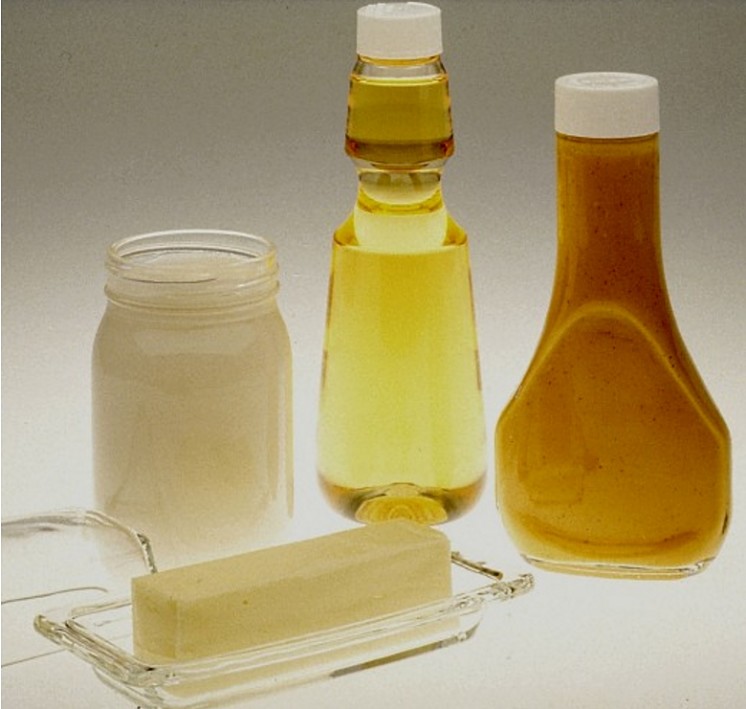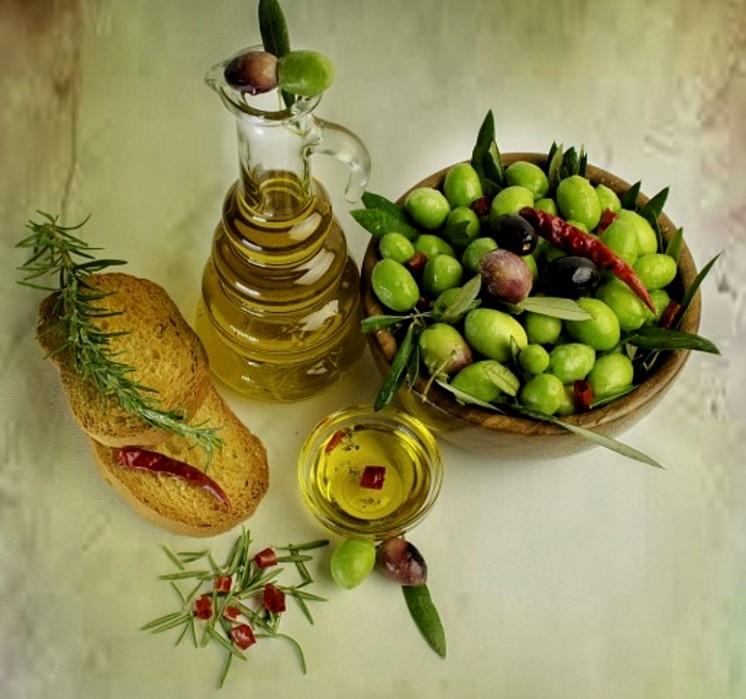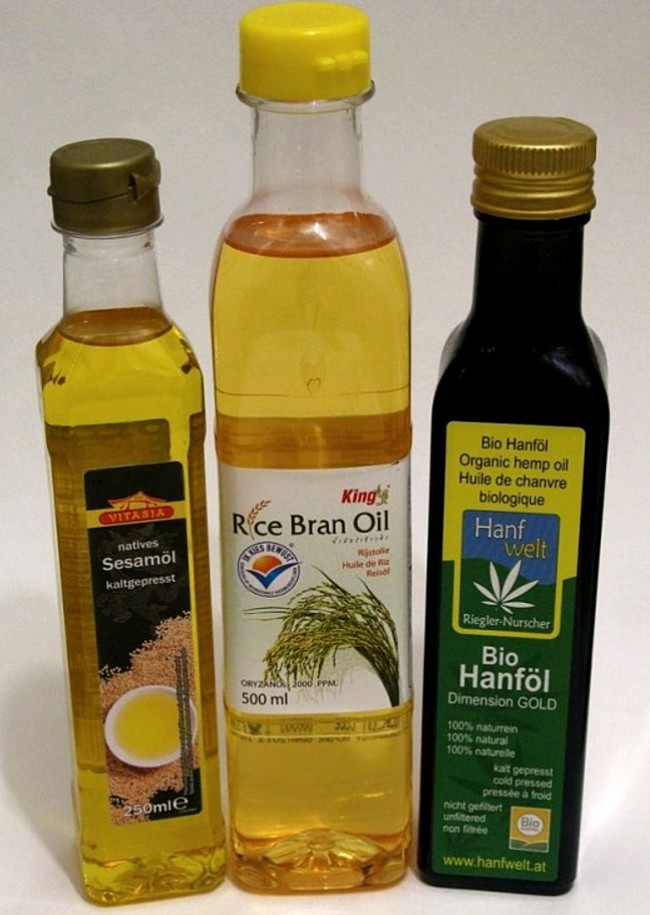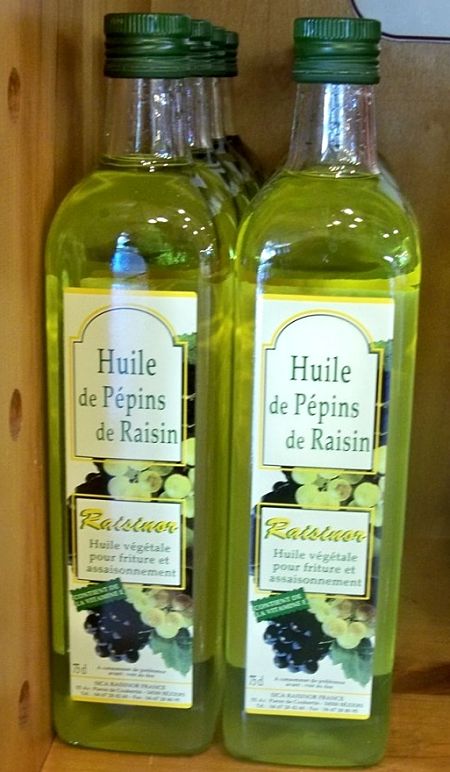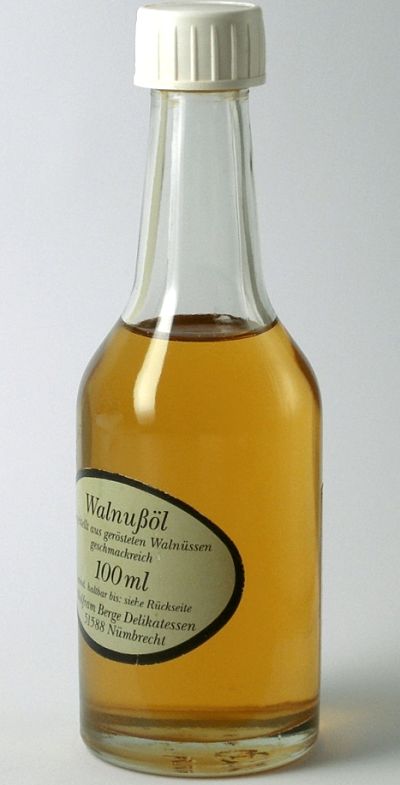Healthiest Cooking Oils Charts - Fat Type, Smoke Point, Taste
There are tens, perhaps hundreds of oils, and all sorts of advice about which one is best. The reality is that there is probably no single oil that is universally the best.
One oil that is good for deep frying, with a high smoke point temperature, may be thick and overpowering when drizzled onto a salad or a cooked dish.
Another oil such as Extra Virgin Olive Oil may have such a strong taste that it swamps and ruins the taste of a delicate fish or seafood dish, or it burns when frying food at high temperature. Many people, including many popular TV chefs, like the taste of olive oil and drizzle it over everything in copious quantities.
There are also health considerations relating to the particular mix of fatty acids in the oil. The best advice is as follows:
► Saturated fats are bad for your health and so should be avoided in favor of other alternatives.
► Mono-unsaturated and Poly-unsaturated fats both offer health benefits and should be in equal portions
► Trans fats should be avoided. This excludes most animal fats
This article provides a ranking of the best oils for various purposes based on smoke point temperature, fatty acid content and taste.
Cooking Oils Rated for Health and Smoke Point Temperature
For high temperature frying the smoke point for the oil is important. This is the temperature at which a cooking fat begins to break down, deteriorate, break down and may start to release free radicals and other harmful products.
But for generally cooking such as softening onions and garlic and moderate temperature stir frying there are a wider range of suitable oils.
Health Considerations
► Trans fats are generally considered a health risk an d oils containing them should be avoided in favor of other choices. Butter and many animal derived oils contain trans fats.
► Low saturated fat and a predominance of poly-unsaturated fatty acids rather than the mono-unsaturated ones are considered better choices for healthy oils.
Using these concepts a health rating has been devised based on the amount of trans, saturated fatty acids and poly-unsaturated fatty acids in the oils.
Tables for the various oils, grouped by smoke point temperature and ranked for health are shown in the tables below. The higher position in each listing, the higher the health score.
High Smoke Point Oils Ranked for Health with the Best Options Listed First
High Smoke Point Oils for Frying (Temperatures > 450 degrees F; 235 degrees C)
Shown below are a group of high smoke point oils that have been ranked in terms of their saturated fat contents. Low saturated fat and a predominance of poly-unsaturated fatty acids rather than the mono-unsaturated ones are a better choice.
Canola and Ghee (derived from butter) both contain trans fats. The other consideration is taste. When stir frying or braising, it is better to use an oil that has a neutral taste, especially for fish and seafood. The best overall oils for high temperature frying are:
► Rice Bran Oil (smoke point 490 degrees F; 255 degrees C)
► Refined Peanut Oil (smoke point 450 degrees F; 235 degrees C)
► Grapeseed Oil (smoke point 420 degrees F; 216 degrees C)
Peanut oil is good for Asian stir frying and shallow frying, but it does have a stronger taste than the other two. Rice bran oil has a neutral flavor and works very well with stir-fries. Grapeseed oil has a lower smoke point temperature, but is an excellent oil for stir frying and general pan frying. It has a neutral taste and is thin and stable when heated and does not discolor or burn
Canola oil should be a good choice, but some products contain trans fats and many people avoid this oil due to genetic modification.
Blended oils are risky as you no not know what they contain. Always read the nutrition labels carefully before choosing the oils you need for various purposes.
Table: High Smoke Point Oils Ranked for Health with the Best Options Listed First
| High Temp Frying Oils | Smoke Point deg F # deg C | Trans Fat g per 100g | Sat Fat | Mono-unsat | Poly-unsat | Comment |
|---|---|---|---|---|---|---|
| Safflower, high Oleic | 475 # 246 | 7 | 77 | 16 | ||
| Almond | 495 # 255 | 8 | 73 | 19 | Distinctive nutty flavor | |
| Mustard, Refined | 489 # 254 | 12 | 59 | 21 | ||
| Safflower, refined | 510 # 265 | 9 | 12 | 75 | ||
| Camolina | 475 # 246 | 11 | 17 | 82 | ||
| Rice Bran | 490 # 255 | 20 | 47 | 33 | Best Choice | |
| Olive Extra Light | 460 # 240 | 15 | 75 | 10 | Good pick except for high temp frying | |
| Soybean | 450 # 232 | 15 | 25 | 60 | High in omega-6 | |
| Avacado, Refined | 520 # 270 | 20 | 70 | 10 | Sweet aroma | |
| Canola, high Oleic | 475 # 246 | 2.5 | 7 | 75 | 17 | Contains low levels of omega-3 and Trans fats |
| Butter ghee | 480 # 250 | 3.3 | 65 | 30 | 5 | Avoid due to trans fats |
Moderate to High Smoke Point Oils (Temperatures about 450 degrees F; 235 degrees C)
Olive oil is generally not suitable for high temperature frying as it has a low smoke point, but it is a good oil for other general purposes. Some refined varieties have a higher smoke point. The strong taste of olive may also be unsuitable for many dishes. It has a good reputation as a healthy oil and is part of the Mediterranean diet. The smoke point for most olive oil is relatively low and 375 degrees. Extra light olive oil has a smoke point of 468 degrees and can be used for frying, but other oils are better.
Table: Medium to High Smoke Point Oils Ranked for Health with the Best Options Listed First
| Medium Frying Oil | Smoke Point °F # °C | Trans Fat g per 100g | Sat fat | Mono-unsat | Poly-unsat | Comment |
|---|---|---|---|---|---|---|
| Soybean high Oleic | 450 # 235 | 7 | 75 | 10 | ||
| Sesame Refined | 450 # 235 | 14 | 40 | 46 | Rich, nutty flavor. Keep refrigerated | |
| Sunflower - high oleic | 450 # 235 | 9 | 82 | 9 | ||
| Corn (Maize) | 450 # 235 | 13 | 29 | 58 | High in omega-6 High-oleic (monounsaturated fat) versions coming soon | |
| Peanut | 450 # 235 | 19 | 48 | 33 | Good for stir frying, but strong taste | |
| Sunflower, refined | 450 # 235 | 12 | 16 | 72 | ||
| Soybean, refined | 450 # 235 | 15 | 23 | 62 | ||
| Palm Kernel | 450 # 232 | 82 | 11 | 7 | High in saturated fat Not recommended | |
| Coconut Oil Refined | 450 # 235 | 92 | 6 | 2 | High in saturated fat Use in moderation |
General Purpose Lower Smoke Point Oils (Temperatures about 410 - 440 degrees F; 210 - 230 degrees C)
Nut and seed oils generally best for salad dressings and generally cooking purposes rather than frying. They impart distinct flavors which are an asset for many of these dishes. Walnut oil, dark sesame oil, hazelnut, pumpkin seed, macadamia and pecan oils are all excellent oils for adding flavor. They can be added to stir fries, but generally at the last minute to impart flavor.
Flavored or scented oils an be used in a similar way to nut a seed oils to add flavor.
Table: General Purpose Medium Smoke Point Oils Ranked for Health with the Best Options Listed First
| General Purpose - Low Temp frying | Smoke Point °F # °C | Trans Fat g per 100g | Sat fat | Mono-unsat | Poly-unsat | Comment |
|---|---|---|---|---|---|---|
| Mustard, Virgin | 410 # 210 | 12 | 59 | 21 | ||
| Hazlenut | 430 # 220 | 10 | 76 | 14 | Bold, strong flavor | |
| Grapeseed | 420 # 216 | 9 | 20 | 71 | High in omega-6 - neutral taste | |
| Sesame | 410 # 210 | 14 | 40 | 46 | Rich, nutty flavor. Keep refrigerated | |
| Argan | 420 # 220 | 18 | 43 | 37 | ||
| Macademia | 410 # 210 | 12 | 84 | 4 | Bold flavor | |
| Olive Oil – Pure | 410 # 210 | 15 | 75 | 10 | Good pick except for high temp frying | |
| Walnut, refined | 400 # 204 | 14 | 19 | 67 | ||
| Avacado, Virgin | 400 # 204 | 20 | 70 | 10 | Sweet aroma | |
| Cottonseed | 420 # 215 | 24 | 26 | 50 | ||
| Palm Oil, Refined | 420 # 215 | 51 | 39 | 10 | High in saturated fat. Not recommended | |
| Red Palm Oil | 380 # 195 | 51 | 39 | 10 | ||
| Canola | 400 # 200 | 2.5 | 7 | 61 | 32 | Contains low levels of omega-3 |
| Beef Tallow | 420 # 220 | 0.2 | 52 | 43 | 5 |
Butter Margarine and Animal Fats (Temperatures about 325 - 375 degrees F; 210 - 230 degrees C)
While often used for frying many animal derived oils such as butter contain trans fat. Most are also rich in saturated fatty acids which are generally considered unhealthy. They have medium to low smoke point temperature, which mean they burn and tends to oxidise when used for frying.
Table: Animal Derived Oils with Moderate to Low Smoke Point Temperatures
| General Purpose Oils (mostly aninal derived) | Smoke Point Deg F # Deg C | Trans Fat g per 100g | Sat fat | Mono-unsat | Poly-unsat |
|---|---|---|---|---|---|
| Goose Fat | 375 # 190 | 28 | 57 | 11 | |
| Chicken Fat | 375 # 190 | 32 | 46 | 22 | |
| Duck Fat | 375 # 190 | 33 | 49 | 13 | |
| Goat Fat | 370 # 188 | 37 | 54 | 9 | |
| Butter | 300 # 148 | 3.3 | 65 | 30 | 5 |
| Lard (Pig) | 360 # 185 | 0.2 | 44 | 45 | 11 |
| Margarine – Soft | 325 # 160 | 15 | 20 | 47 | 33 |
| Butter – Clarified | 375 # 190 | 3.3 | 65 | 30 | 5 |
| Margarine – Hard | 325 # 160 | 15 | 80 | 14 | 16 |
Drizzling and Salad Oils - Unsuitable for Frying
Many oils with very low smoke points are unsuitable for frying, but a great in salads and for adding to baked goods.
Table: Low Smoke Point Temperature Oils Unsuitable for Frying and Good for Drizzling
| Drizzling Oils – flavor | Smoke Point Deg F # deg C | Trans Fat g per 100g | Sat fat | Mono-unsat | Poly-unsat | Comment |
|---|---|---|---|---|---|---|
| Flaxseed | 225 # 107 | 9 | 20 | 66 | ||
| Hemp | 330 # 165 | 8 | 12 | 80 | Good source of omega-3 Keep refrigerated | |
| Walnut | 320 # 160 | 9 | 67 | 24 | Good source of omega-3 | |
| Toasted Sesame | 275 # 135 | 15 | 44 | 41 | ||
| Olive, Virgin | 320 # 160 | 15 | 75 | 10 | Good pick except for high temp frying | |
| Pumpkin seed oil | 266 # 130 | 15 | 32 | 53 | Contains omega-3 | |
| Wheat Germ | 225 # 107 | 17 | 18 | 65 | Rich in omega-6 Keep refrigerated | |
| Coconut Oil Virgin | 350 # 175 | 92 | 6 | 2 | High in saturated fat Use in moderation |
